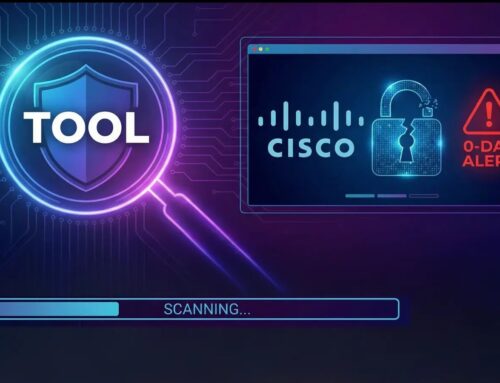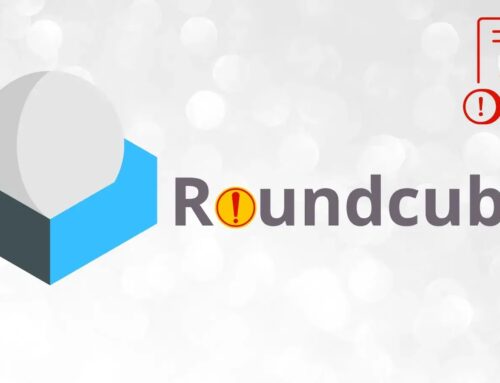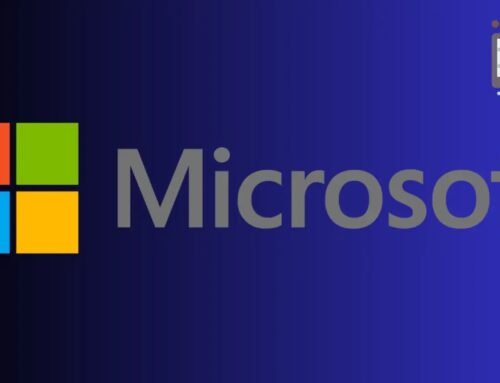
Threat Actors Abuse Proofpoint’s and Intermedia’s Link Wrapping Features to Hide Phishing Payloads
The Trojan Horse in Trusted Email Security: How Threat Actors Weaponize Link Wrapping
In the evolving landscape of cyber threats, the very mechanisms designed to protect us can, at times, be cunningly turned against us. A recent and alarming development reveals a sophisticated tactic where threat actors are leveraging the legitimate link-wrapping features of established email security solutions, specifically Proofpoint Protect and Intermedia LinkSafe, to conceal credential-phishing payloads. This insidious approach allows malicious URLs to bypass conventional filters, presenting a significant challenge to organizational security posture. First observed in late July 2025, these campaigns represent a critical escalation in the cat-and-mouse game between defenders and attackers.
Understanding Link Wrapping and Its Current Abuse
Link wrapping, a common feature in enterprise email security suites, is designed to analyze outgoing and incoming links for malicious content. When an email contains a URL, the security solution typically rewrites or “wraps” it with its own domain, such as urldefense.proofpoint.com or safe.intermedia.net. This allows the service to scan the link in real-time if a user clicks it, preventing access to known dangerous sites. The initial intent is noble: to provide a crucial layer of defense against phishing, malware, and other web-based threats.
However, recent credential-phishing campaigns have revealed an ingenious exploitation of this very feature. Threat actors are embedding their malicious URLs *within* the legitimate link-wrapping services. Because corporate filters are configured to trust these domains (as they are part of their deployed security infrastructure), the wrapped, yet malicious, links are allowed to pass through unimpeded. This creates a false sense of security for end-users, who see a trusted domain in the URL and are less likely to suspect a phishing attempt.
The core of the abuse lies in the structure of the wrapped URL itself. For example, a legitimate Proofpoint wrapped URL might look like https://urldefense.proofpoint.com/v2/url?u=https-3A__malicious-2Ecom_phish&d=DwIGaQ&c=sCL.... The attackers craft their phishing links in such a way that they are initially “safe” when scanned by the wrapping service or, more likely, they point to a redirector or a temporary safe page that *then* leads to the phishing payload after the trusted wrapping service has done its job. This allows the wrapped URL to appear benign at the initial point of entry into the network, bypassing reputation-based or signature-based scanning that would flag raw malicious URLs.
The Mechanism of Compromise: Bypassing Filters
The primary reason for the success of these campaigns is the inherent trust placed in the security solution’s domains. Organizations whitelist or grant elevated trust to urldefense.proofpoint.com and safe.intermedia.net. This means that email gateways, firewalls, and endpoint protection solutions are less likely to scrutinize traffic originating from or routed through these domains. Attackers exploit this trust chain:
- Trusted Domain Whitelisting: Security solutions are typically configured to trust their own domains. This means emails containing wrapped links from Proofpoint or Intermedia often bypass initial email filters that would otherwise block suspicious URLs.
- Dynamic Redirection: The malicious payload might not be directly hosted at the wrapped URL’s immediate destination. Instead, attackers use a series of redirects. The initial page the wrapped URL points to might be benign or even a legitimate service, which then redirects the user to the actual phishing site after the initial security checks have passed.
- User Familiarity: Employees are trained to recognize legitimate URLs from their security providers. Seeing
urldefense.proofpoint.comorsafe.intermedia.netcan inadvertently disarm their natural suspicion, increasing the likelihood of them clicking the link.
Remediation Actions and Mitigations
Addressing this sophisticated threat requires a multi-layered approach, combining technical controls with user education.
- Enhanced URL Rewriting and Analysis: Organizations should work closely with Proofpoint, Intermedia, and other email security vendors to ensure their link-wrapping services are continuously updated to detect and prevent this abuse. This may involve deeper analysis of redirect chains and content originating from wrapped links, even after they’ve passed initial checks.
- Advanced Threat Protection (ATP): Implement modern ATP solutions capable of behavioral analysis and sandbox detonation for all URLs, even those seemingly benign or wrapped by trusted services. These tools can identify suspicious redirects or the dynamic loading of phishing content.
- Browser Isolation Technologies: Consider deploying browser isolation solutions for high-risk users or for accessing external links. These technologies execute web content in a separate, isolated environment, preventing malicious code from reaching the user’s endpoint.
- Multi-Factor Authentication (MFA): Mandate MFA for all critical services, especially email, cloud applications, and internal systems. Even if a user falls victim to a phishing attempt and enters credentials, MFA can significantly reduce the success rate of a full account compromise.
- User Awareness Training: Reinforce strong security awareness training focusing on the evolving nature of phishing. Educate users not to solely rely on the “trusted” domain in a wrapped link, but to scrutinize the landing page for authenticity (e.g., mismatched branding, suspicious login fields, generic language). Emphasize reporting suspicious emails, even if they appear to originate from known security services.
- Continuous Monitoring and Threat Hunting: Actively monitor network traffic and security logs for suspicious activity originating from or leading to known phishing indicators. Implement threat hunting exercises to proactively search for signs of compromise related to these tactics.
- Review Email Gateway Rules: Periodically review and refine email gateway rules. While whitelisting security vendors’ domains is necessary, ensure that other layers of defense are not bypassed by this whitelisting. Implement additional checks for suspicious patterns within the wrapped URLs.
The Path Forward: Adapting to Evolving Threats
The abuse of Proofpoint’s and Intermedia’s link-wrapping features highlights a critical truth in cybersecurity: attackers will always seek to exploit trust and leverage even the most robust security mechanisms. This incident underscores the importance of continuous adaptation, deep technical understanding of attacker methodologies, and a proactive security posture. Organizations must move beyond static defenses and embrace dynamic, intelligence-driven strategies to protect against these sophisticated credential-phishing campaigns. Staying vigilant and fostering a security-aware culture are paramount in safeguarding digital assets against these ever-evolving threats.





